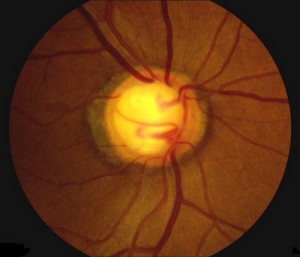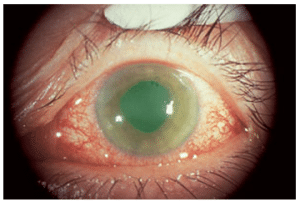Glaucoma

A leading cause of visual impairment in the United States, Glaucoma can affect patients of all ages, but is most commonly seen in the elderly.
Many people affected with glaucoma do not experience any symptoms and may not be aware that they have the disease until they have lost a significant amount of vision. Typically vision loss starts in the peripheral visual field and thus often goes unnoticed. Once damage has been done, there is currently no treatment to reverse this.
With early detection and treatment, however, eyes can be protected against serious loss of vision or blindness. Catching glaucoma at an early, treatable stage is one important reason to have thorough eye examinations on a regular basis.
Risk Factors for Glaucoma
There are several factors that increase the risk of developing glaucoma, including:
- Being over 60
- Being of particular ethnicity, such as African-American or South East Asian
- Having a family history of glaucoma
- Having elevated intraocular pressure
- Having certain medical conditions, like diabetes
- Taking certain medications, such as corticosteroids for prolonged periods
Patients with risk factors for the disorder should be especially vigilant about having regular eye examinations.
Causes of Glaucoma
Certain diseases or conditions can contribute to the development of glaucoma. These include:
- Increased pressure within the eye
- Injury to the eye
- Blocked blood vessels
- Inflammatory conditions of the eye
- Chronic use of steroids
Types of Glaucoma
There are several types of glaucoma. The two major types are Primary Open-angle Glaucoma, in which fluid drains too slowly from the drainage channels (trabeculae) of the eye, and Angle-closure (narrow-angle) Glaucoma, which occurs when the trabeculae become blocked by the iris. Approximately 95 percent of glaucoma patients suffer from Primary Open-angle Glaucoma. Types of glaucoma that occur less frequently include:
- Low Tension Glaucoma
- Congenital Glaucoma
- Secondary Glaucoma
- Pigmentary Glaucoma
- Pseudoexfoliation Glaucoma
Symptoms of Glaucoma
It is important to remember that patients with early stage glaucoma are most often asymptomatic. When symptoms occur, they vary depending on the type of glaucoma and can occur in one eye or both eyes.
The symptoms of Open-angle Glaucoma include:
- Dim or blurred vision
- Gradual loss of peripheral vision
- Tunnel vision (at advanced stages)

Acute Angle-Closure Glaucoma
The symptoms of Angle-Closure Glaucoma include:
- Severe eye pain
- Nausea and vomiting
- Sudden blurring of vision
- Halos around lights
- Red eyes
- Headache
Diagnosis of Glaucoma
The diagnosis of glaucoma is made after a comprehensive medical examination of the eye and a review of the patient’s medical history. Tests are conducted to confirm the diagnosis and may include the following:

Visual field test showing visual loss
- Tonometry
- Dilated eye exam
- Visual field test
- Photographs of the optic nerves
- Pachymetry
- Gonioscopy
- Visual acuity test
- Optical Coherence Tomography (OCT)
Once glaucoma has been diagnosed, treatment should begin as soon as possible to help minimize the risk of permanent vision loss.
Treatment of Glaucoma
There is no cure for glaucoma, so treatment focuses on preventing further damage. Some of the treatment methods for glaucoma are as follows:
Medication
Eye drops or oral medication may be used to either reduce fluid production in the front of the eye or to help drain excess fluid. Side effects of the medication may result in redness, stinging, irritation or blurred vision. Regular use of the medication is needed to keep the eye pressure under control.
Laser Surgery
Trabeculoplasty (Open-angle) or Iridotomy (Closed-angle) are laser procedures that aim to increase the outflow of fluid from the eye or eliminate fluid blockages. These laser treatments can be used in combination with medical treatment or may take the place of medical treatment in certain situations.
Other Surgery
A trabeculectomy may be used to create a new channel to drain fluid from the eye and reduce the pressure that causes glaucoma. Surgery is performed only after medication and laser procedures have been unsuccessful. Surgery, however, does have the potential for serious side effects. Minimally-invasive Glaucoma surgical (MIGS) approaches are a rapidly growing area that can lower pressure with less potential for side effects.
While patients with early stage glaucoma may not experience any symptoms, prompt treatment is required to preserve their vision. The doctors at LOC can counsel you as to what are your best options.
